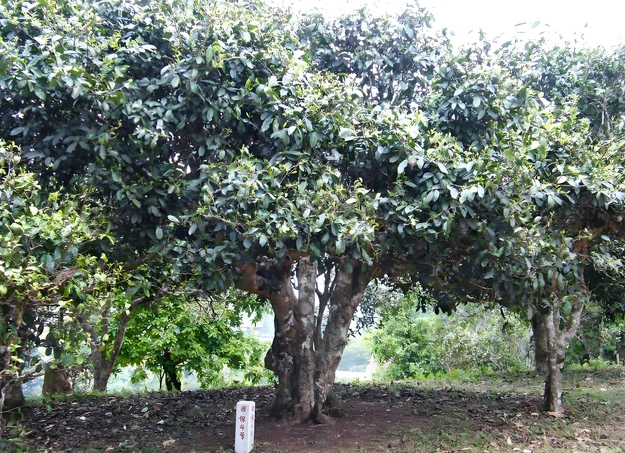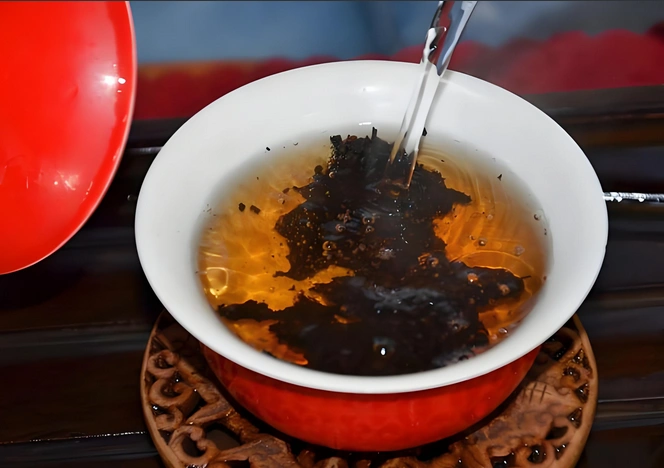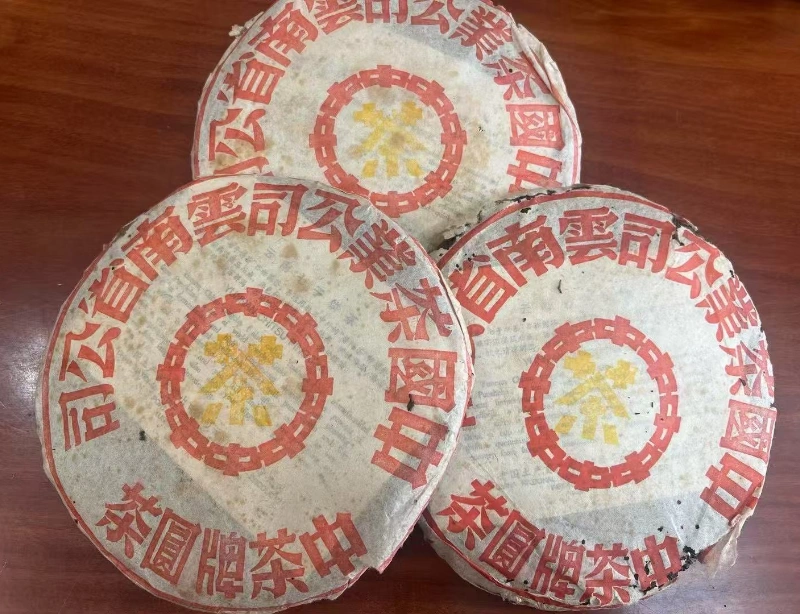Pu Erh tea after meals greets your senses like a warm, amber sunrise that envelops your palate in a gentle embrace, promising digestive serenity and holistic well-being. Imagine lifting a delicate porcelain cup of velvety tea just after a hearty meal—steam curling upward, carrying earthy aromas of damp forest floor, rich cocoa, and sweet dried fruit. With that first sip, warmth floods your chest; your stomach relaxes, and you feel a soothing wave wash over your body.
In this article, you will discover how pu erh tea after meals becomes an elegant ritual to promote pu erh tea digestion, support pu erh tea for diabetes, and enhance pu erh tea weight loss results, all while indulging in a sensory journey that nourishes both body and soul.
Tradition and Benefits of Post-Meal Pu Erh Tea
Cultural Roots in Yunnan Tea Ceremony
In the mist-shrouded mountains of Yunnan Province, ancient tea masters discovered centuries ago that drinking pu erh tea after meals was a secret to lasting vitality. Locals would gather around earthen stoves, steep fresh pu erh leaves in boiling water, and let the deep, copper-hued liquor saturate their senses. Over time, this post-meal tea ritual transcended mere habit, becoming a ceremony: the gentle clink of teacups, laughter drifting over steam, and the meditative act of pouring created a space for digestion, conversation, and mindful appreciation. Today, pu erh tea after meals remains an enduring tradition—passed down through generations—as a way to honor the body’s natural rhythm and savor the unparalleled depth of pu erh’s aged complexity.
Why Post-Meal Tea Matters
After a substantial meal, blood surges to your digestive organs, focusing energy on breaking down proteins, fats, and carbohydrates. This process can leave you feeling heavy, sluggish, or bloated—especially after indulgent foods rich in oils or starch. Sipping pu erh tea after meals offers a graceful “reset.” Its warm, tannin-infused liquor slips down your throat, gently stimulating gastric juices and encouraging bile production. As a result, digestion becomes smoother, nutrient absorption improves, and the uncomfortable post-meal slump dissipates. Moreover, incorporating pu erh tea after meals cultivates an intentional pause—a moment to reflect on nourishment and gratitude—transforming ordinary digestion into a mindful, sensory celebration.

How Pu Erh Tea Aids Digestion
Mechanisms of Pu Erh Tea Digestion
When you sip pu erh tea after meals, a cascade of digestive benefits unfolds:
- Bile Stimulation: Pu erh’s polyphenols gently encourage the liver to secrete bile, which emulsifies fats in the small intestine. As fats break down more efficiently, you experience less heaviness and fewer post-meal stomach cramps.
- Enzyme Activation: Compounds like theabrownins in pu erh activate digestive enzymes—lipases and amylases—helping to break down lipids and carbohydrates. This accelerates the digestive process, reducing bloating and discomfort.
- Gastric Motility Enhancement: Caffeine and theanine within pu erh synergize to promote gentle gastric contractions, nudging food along at a steady pace. When meals linger too long in the stomach, you feel drowsy or queasy; pu erh tea digestion helps food transit more smoothly, banishing fatigue.
- Microbiome Support: Fermentation-derived prebiotics nurture beneficial gut bacteria—Lactobacillus and Bifidobacterium—that aid in breaking down fiber and synthesizing short-chain fatty acids. A balanced microbiome translates to consistent bowel movements and reduced gas.
By combining warmth, enzymatic support, and microbial nurturing, pu erh tea after meals orchestrates a harmonious digestive symphony, allowing you to relish each course without lingering heaviness.
Comparison with Oolong Tea
While pu erh tea after meals garners acclaim for its deep, earthy profile, oolong tea also offers notable digestive benefits—but with a lighter touch. Oolong’s partial oxidation preserves floral and fruity polyphenols—EGCG and theaflavins—that can modestly enhance fat metabolism and soothe mild indigestion. However, pu erh tea digestion typically surpasses oolong’s effects due to pu erh’s extended fermentation. Over months or years, pu erh develops complex theabrownins that possess stronger enzyme-activating and bile-stimulating properties. If you crave a gentler afternoon pick-me-up, a delicate oolong infusion does wonders; yet for robust post-meal clarity and digestive harmony, pu erh tea after meals remains the gold standard.
Blood Sugar Regulation: Pu Erh Tea After Meals for Diabetes
Role of Pu Erh Tea for Diabetes
For individuals managing type 2 diabetes, watching blood sugar spikes after meals is paramount. When consumed as pu erh tea after meals, pu erh can serve as a potent ally in blood glucose control. Its unique polyphenol composition inhibits key carbohydrate-digesting enzymes—α-amylase and α-glucosidase—slowing the conversion of starches into glucose. As a result, postprandial blood sugar rises more gradually, easing the burden on insulin production. Additionally, pu erh tea for diabetes has been shown in pilot studies to enhance cellular insulin sensitivity, enabling muscle and liver cells to absorb glucose more efficiently. By incorporating pu erh tea after meals into your routine, you invite a gentle, natural modulator that helps maintain stable blood sugar and curbs insulin resistance.
Clinical Insights and Studies
A 2020 human trial observed 30 prediabetic adults who drank two cups of pu erh tea after meals—one after lunch and one after dinner—over eight weeks. Researchers noted a 12% reduction in peak post-meal blood glucose and a 10% improvement in insulin sensitivity compared to controls. Parallel animal studies corroborate these findings: diabetic rats receiving pu erh extract post-meal displayed reduced glycemic peaks and stabilized HbA1c levels over a 12-week period. While additional large-scale trials are warranted, early evidence underscores the potential of pu erh tea after meals as an adjunct to standard diabetes management—supporting you in navigating meals with fewer glucose spikes.
Weight Management with Pu Erh Tea
Pu Erh Tea Weight Loss Results
For those pursuing a slimmer silhouette, pu erh tea after meals can complement a balanced diet and exercise regimen, amplifying weight management efforts. Research suggests that pu erh’s polyphenols and theabrownins boost lipid metabolism by upregulating genes involved in fat oxidation—CPT1 and PPAR-α—while downregulating fats’ storage genes—SREBP-1c and FAS. In a 2019 clinical study, participants who drank pu erh tea after meals (three cups daily) for twelve weeks experienced an average body weight reduction of 3.5% and a 7% decrease in visceral fat. They also reported less post-meal bloating and steadier energy levels throughout the day. Anecdotally, many enthusiasts credit pu erh tea weight loss results to improved digestion and mild thermogenic effects—helping calories burn more efficiently rather than lingering as stubborn fat.
Combining with Healthy Eating and Exercise
While pu erh tea after meals packs a metabolic punch, it shines brightest when paired with sensible lifestyle choices. Consider this integrated approach:
- Balanced Macronutrients: Prioritize lean proteins, whole grains, and colorful vegetables that provide fiber and essential nutrients.
- Regular Physical Activity: Engage in at least 150 minutes of moderate exercise weekly—brisk walking, cycling, or swimming—to complement pu erh’s fat-burning signals.
- Hydration and Mindful Portions: Sip water alongside your pu erh tea to stay hydrated, and practice mindful eating to prevent overeating.
- Consistent Routine: Enjoy your pu erh tea after meals at similar times daily—typically 15–30 minutes post-meal—so your metabolism learns to anticipate the digestive boost.
By weaving pu erh tea after meals into this healthy tapestry, you create a synergy that maximizes pu erh tea weight loss results, nurtures your body’s vitality, and fosters a sustainable path toward your ideal weight.
Brewing Pu Erh Tea After Meals
Optimal Brewing Techniques Post-Meal
To unlock the full potential of pu erh tea after meals, you must brew it with intention and precision. Follow these guidelines:
- Select Quality Leaves: Choose reputable pu erh—raw (sheng) if you prefer brisker, youthful notes or ripe (shu) for a deeper, smoother profile. Look for clear labeling of origin (Yiwu, Bulang Mountain, Banzhang) and production date.
- Water Preparation: Use filtered or spring water, heated to 95–100 °C (203–212 °F). Avoid over-boiling, which can strip subtle flavors and degrade delicate polyphenols.
- Tea-to-Water Ratio: For a western-style cup (250 mL), use 5–6 g of loose-leaf pu erh. If you enjoy gongfu style—more layers of flavor—employ 6–8 g per 100–150 mL water.
- Rinsing Leaves: Quickly rinse the leaves (5–8 seconds) with hot water, then discard the rinse water. This step “wakes up” the leaves, cleans off fermentation dust, and primes them to release beneficial compounds.
- Steeping Time: For the first infusion, steep 30 seconds—just enough to capture the initial wave of aroma and flavor. For subsequent infusions, gradually extend steeping by 10–15 seconds across 5–7 infusions. Each infusion unfolds new nuances—smoky, earthy, or sweet—while releasing digestive enhancers.
By mastering these brewing techniques, your pu erh tea after meals transforms into a multi-layered symphony of taste and function, ensuring every sip actively supports digestion, blood sugar balance, and weight management.
Ideal Tea-to-Water Ratios and Temperatures
Fine-tuning your pu erh tea after meals ritual also involves balancing strength and comfort—especially important after a full stomach:
- Less Intense Option: If you crave a gentler infusion, reduce leaf quantity to 3–4 g per 250 mL water, steeping for 2–3 minutes in western style.
- Hearty, Deeper Infusion: For maximum metabolic effect, use 6 g per 250 mL, steeping 4–5 minutes, or deploy gongfu style across 100 mL for multiple shorter infusions.
- Temperature Tips: Raw pu erh teas boast brighter, floral notes when brewed at 90–95 °C (194–203 °F), whereas ripe pu erh teas reveal richer, cocoa-like nuances at 95–100 °C (203–212 °F). Adjust according to your post-meal mood and desired warming effect.
Attune your brewing to your palate and digestive needs—allowing pu erh tea after meals to gently coax your body toward harmony rather than overwhelm it.

🔗 To learn more about how to make tea, check out Tanbiwencha’s YouTube video explaining how to make tea.
Integrating Pu Erh Tea into Daily Routine
Pairing with Different Cuisines
One of the delights of pu erh tea after meals is its remarkable versatility. Its deep, earthy profile pairs beautifully with diverse cuisines:
- Rich, Fatty Foods: After enjoying a succulent steak or creamy pasta, pu erh tea after meals cuts through richness, its tannins gently cleansing your palate while aiding fat breakdown.
- Spicy Ethnic Dishes: Bold flavors like Szechuan or Mexican spices find respite in a warm, soothing pu erh infusion; its earthy undertones balance capsaicin heat and calm stomach lining.
- Desserts and Sweets: Pairing pu erh tea after meals with a slice of chocolate cake creates a delightful contrast—pu erh’s mild bitterness balances sugar, lending a sophisticated postprandial treat.
- Light, Plant-Based Meals: Even a humble salad with avocado or tofu benefits from a cup of pu erh. Its subtle depth complements freshness, and pu erh tea digestion support prevents any lingering heaviness from legumes or grains.
By aligning pu erh tea after meals with various dishes, you create a tailored digestive aid, ensuring each eating occasion concludes with warmth, comfort, and holistic balance.
Timing and Frequency for Maximum Benefits
To derive the greatest advantages from pu erh tea after meals, consider strategic timing:
- Immediately Post-Meal (5–10 Minutes): Sip a smaller infusion to activate bile secretion and kickstart digestive enzymes. This quick boost counters bloating and encourages efficient nutrient absorption.
- Mid-Digestive Phase (20–30 Minutes Post-Meal): Indulge in a fuller cup, allowing pu erh’s theabrownins to engage in antioxidant and anti-inflammatory action—reducing any mild cramps or fatigue.
- Pre-Next Meal (2–3 Hours Later): A light infusion can gently stabilize blood sugar before your next meal, preventing sudden hunger pangs and energy slumps.
Aim for pu erh tea after meals frequency of 1–2 cups following your main meals—lunch and dinner—monitoring how your body responds. Some individuals even enjoy a small morning cup if they skipped breakfast, but the primary focus remains on meals containing significant fats or carbs. By discerning your unique needs, pu erh tea after meals evolves into a personalized wellness ritual that fits seamlessly into your lifestyle.
Potential Risks and Precautions
Caffeine Sensitivity and Timing
Although pu erh tea after meals offers many benefits, its caffeine content (30–70 mg per cup) warrants caution for those sensitive to stimulants. Consuming pu erh too late in the evening could disrupt sleep. If you’re particularly sensitive, limit your pu erh tea after meals intake to lunch and early dinner, and opt for shorter steep times (30–60 seconds) to reduce caffeine extraction. Pregnant or nursing individuals should consult their healthcare provider before making pu erh a daily habit.
Quality and Storage Tips
To maintain both safety and efficacy of pu erh tea after meals, source high-quality tea and store it properly:
- Authenticity: Purchase from reputable vendors who disclose origin (Yiwu, Bulang Mountain, Banzhang) and production date. Avoid suspect teas with musty or chemical odors.
- Storage Environment: Store pu erh in a cool, dry, well-ventilated space—ideal conditions are 20–25 °C (68–77 °F) with 60–70% humidity. Keep away from strong odors (spices, coffee) that can taint its aroma.
- Packaging: Traditional bamboo or paper wrapping allows pu erh to breathe and age gracefully. Avoid plastic bags or airtight containers that suppress natural fermentation processes.
By honoring these guidelines, your pu erh tea after meals remains a potent, safe companion—its deep, evolving flavors preserved, and its digestive and metabolic advantages intact.

FAQs About Pu Erh Tea After Meals
Can I Drink Pu Erh Tea Immediately After Eating?
Yes, you can enjoy pu erh tea after meals shortly after finishing your plate. Ideally, wait about 5–10 minutes post-meal to allow your stomach to settle, then sip a small amount to gently stimulate bile release and enzymatic activity. Drinking too quickly (within 1–2 minutes) may dilute stomach acids; a brief pause ensures you receive pu erh tea digestion benefits without hindering early digestion.
How Much Pu Erh Tea Should I Drink?
Typically, 1–2 cups of pu erh tea after meals per day—one after lunch and one after dinner—provides notable digestive, blood sugar, and weight management support. Each cup should be about 200–250 mL with 5–6 g of leaves. For those acclimated to pu erh’s earthy depth, a third cup (post-breakfast) can be added. Adjust dosage and steep times to your sensitivity: shorter steeps (30–60 seconds) yield a milder infusion, while longer steeps (3–5 minutes) offer robust flavor and maximum polyphenols.
Does Pu Erh Tea Affect Iron Absorption?
All teas contain tannins, which can bind non-heme iron from plant foods, potentially reducing absorption. To minimize interference, wait at least one hour after pu erh tea after meals to consume iron-rich plant foods or supplements. If you follow a vegetarian or vegan diet with limited heme iron sources, rotate pu erh tea after meals to times between meals rather than immediately after iron-heavy dishes. Balanced timing ensures you still reap pu erh tea digestion benefits without compromising nutritional intake.
Conclusion: Embracing Pu Erh Tea After Meals
Summary of Benefits
We’ve journeyed through the art and science of pu erh tea after meals, uncovering how this ancient elixir:
- Supports Digestion by stimulating bile, activating enzymes, and nurturing a balanced gut microbiome.
- Moderates Blood Sugar in partnership with pu erh tea for diabetes, helping blunt post-meal spikes and improve insulin sensitivity.
- Aids Weight Management with pu erh tea weight loss results, promoting fat oxidation and metabolic harmony.
- Offers Anti-Inflammatory Lift through deep fermentation, surpassing many teas in mitigating chronic inflammation linked to digestive discomfort and metabolic stress.
- Blends with Diverse Cuisines, transforming every meal into a sensory adventure and gentle wellness boost.
By embracing pu erh tea after meals, you create a mindful ritual that elevates not only your digestion but your entire sense of well-being—warming the belly, calming the mind, and nurturing your body from the inside out.
Encouragement to Explore Tea Varieties
Although pu erh tea after meals reigns supreme for digestive and metabolic support, remember that tea’s world is rich and varied. Delight in oolong tea’s floral brightness during mid-morning breaks, sip green tea for an antioxidant kick at sunrise, or enjoy a soothing herbal infusion—ginger for tummy comfort, chamomile for evening relaxation—when you seek caffeine-free calm. By weaving pu erh tea after meals into a broader tea tapestry, you honor the complexity of taste and function, crafting a personalized symphony of wellness.
May each cup of pu erh tea after meals guide you toward digestive ease, balanced energy, and a deeper appreciation for the simple, ritualistic joys of tea. Here’s to your journey of harmony—sip by sip.



